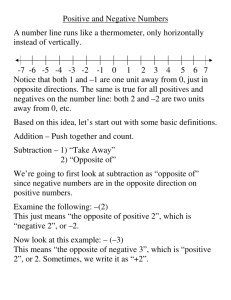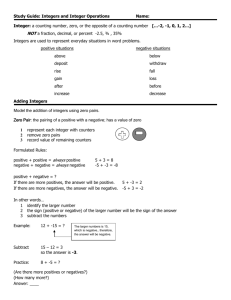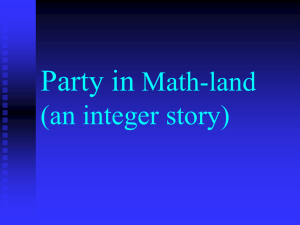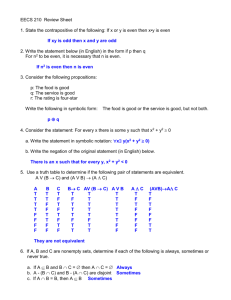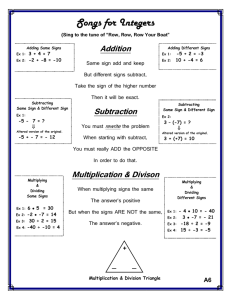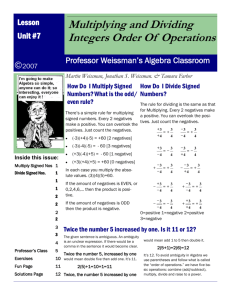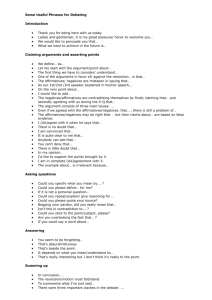Study Guide: Multiplying and Dividing Integers
advertisement
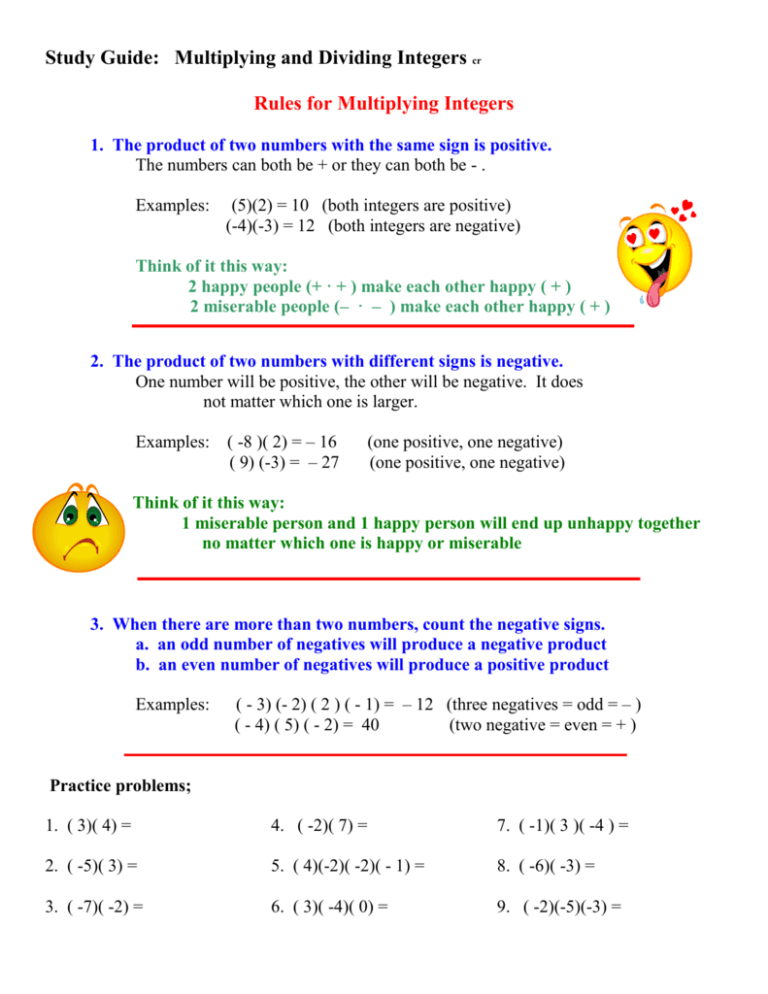
Study Guide: Multiplying and Dividing Integers cr Rules for Multiplying Integers 1. The product of two numbers with the same sign is positive. The numbers can both be + or they can both be - . Examples: (5)(2) = 10 (both integers are positive) (-4)(-3) = 12 (both integers are negative) Think of it this way: 2 happy people (+ · + ) make each other happy ( + ) 2 miserable people (– · – ) make each other happy ( + ) 2. The product of two numbers with different signs is negative. One number will be positive, the other will be negative. It does not matter which one is larger. Examples: ( -8 )( 2) = – 16 ( 9) (-3) = – 27 (one positive, one negative) (one positive, one negative) Think of it this way: 1 miserable person and 1 happy person will end up unhappy together no matter which one is happy or miserable 3. When there are more than two numbers, count the negative signs. a. an odd number of negatives will produce a negative product b. an even number of negatives will produce a positive product Examples: ( - 3) (- 2) ( 2 ) ( - 1) = – 12 (three negatives = odd = – ) ( - 4) ( 5) ( - 2) = 40 (two negative = even = + ) Practice problems; 1. ( 3)( 4) = 4. ( -2)( 7) = 7. ( -1)( 3 )( -4 ) = 2. ( -5)( 3) = 5. ( 4)(-2)( -2)( - 1) = 8. ( -6)( -3) = 3. ( -7)( -2) = 6. ( 3)( -4)( 0) = 9. ( -2)(-5)(-3) = ÷ ÷ Rules for Dividing Integers ** (Rules for division of signed numbers are the same as for multiplication) 1. The quotient of two numbers with the same sign is positive. The numbers can both be + or they can both be – . Examples: 12 ÷ 3 = 4 – 24 ÷ (– 8 ) = 3 (both positive) (both negative) 2. The product of two numbers with different signs is negative. One number will be positive, the other will be negative. It does not matter which one is larger. Examples: (– 18 ) ÷ ( 3) = – 6 ( 14) ÷ (– 2 ) = – 7 (one is positive, one is negative) (one is positive, one is negative) 3. When there is a mixture of multiplication and division and there are more than two numbers, count the negative signs. a. an odd number of negatives will produce a negative product b. an even number of negatives will produce a positive product Examples: (3)( 4) 6 2 (one negative = odd = – ) (2)( 6) 4 ( 3) (three negatives = odd = – ) (5)( 4) 10 (2) (two negatives = even = + ) Practice problems; 1. ( - 4) ÷ ( -2) = 2. 35 -7 3. ( 8) ÷ ( - 2) = 4. (-6)(-3) (-9) 5. ( - 24) ÷ ( 3) = 6. (2)(-14) (-7)
